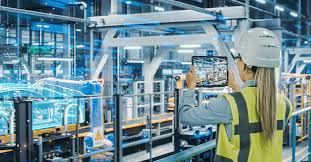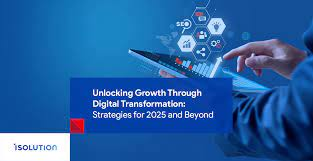Now Reading: Innovation & Industry 2025: 7 Powerful Trends Shaping Global Growth
-
01
Innovation & Industry 2025: 7 Powerful Trends Shaping Global Growth
Innovation & Industry 2025: 7 Powerful Trends Shaping Global Growth

Table of Contents
In today’s fast-changing world, the link between innovation and industry has never been stronger. Across the globe, industries are being transformed by new technologies, fresh ideas, and forward-looking strategies. From manufacturing to healthcare, and from real estate to retail, innovation is no longer just an option it has become the lifeblood of business growth.
This shift is not only shaping how companies operate but also influencing how people live, work, and interact with the world around them. As we step deeper into 2025, the industries that embrace innovation are finding themselves ahead, while those that resist risk being left behind.
Innovation as the Engine of Industry
Traditionally, industries relied on stable methods, consistent demand, and predictable supply chains. But in the 21st century, change is constant. Market trends shift rapidly, consumer expectations evolve overnight, and global challenges from climate change to resource shortages—demand smarter solutions.
Innovation has become the engine that keeps industries running smoothly and competitively. It allows businesses to:
- Develop faster and more efficient processes.
- Create sustainable and eco-friendly products.
- Provide better experiences to customers.
- Reduce costs while improving quality.
For example, in the automotive sector, the rise of electric vehicles (EVs) and autonomous driving technology has redefined what consumers expect from cars. Companies that invested in innovation early, like Tesla and BYD, are now industry leaders. Others are racing to catch up, proving that innovation sets the pace for success.
Technology: The Cornerstone of Innovation

At the heart of most industry changes lies technology. Artificial intelligence (AI), machine learning, robotics, and the Internet of Things (IoT) are not just buzzwords anymore. They are practical tools shaping the future of industries.
- Manufacturing: Smart factories now use AI-powered machines to predict maintenance, reduce downtime, and cut energy use.
- Healthcare: Telemedicine, AI diagnostics, and personalized medicine are transforming patient care and making healthcare more accessible worldwide.
- Retail: E-commerce platforms, powered by data analytics and customer behavior tracking, offer personalized shopping experiences at scale.
- Real Estate: Smart homes, digital transactions, and virtual property tours are now common, making the buying process faster and more transparent.
This shows how innovation is not limited to one sector—it flows across all industries, creating new opportunities and challenges.
Green Innovation: Sustainability in Industry
One of the most critical aspects of innovation today is sustainability. Industries are under pressure to reduce carbon footprints, cut waste, and adopt eco-friendly practices. Green innovation has become a competitive advantage.
- In construction, companies are using recyclable materials and designing energy-efficient buildings.
- In fashion, sustainable fabrics and circular business models (reselling and recycling) are gaining popularity.
- In energy, solar, wind, and hydrogen solutions are being scaled up to replace fossil fuels.
Consumers are increasingly choosing brands that align with their values. As a result, industries investing in green innovation are winning trust and loyalty.
The Role of Startups in Innovation
While large corporations often dominate industries, startups are the real spark of innovation. Small but agile, startups challenge traditional players by offering fresh ideas, disruptive technologies, and unique customer experiences.
For example, fintech startups are reshaping banking by offering digital wallets, blockchain-based payments, and peer-to-peer lending platforms. In healthcare, health-tech startups are using wearables and AI apps to help individuals track their health in real-time.
Industries are learning that collaborating with startups—through partnerships, acquisitions, or innovation hubs—can bring the fresh energy they need to stay competitive.
Challenges in Innovation and Industry

While the benefits of innovation are clear, industries also face challenges when trying to adopt it:
- High Costs: Implementing new technologies requires significant investment.
- Skill Gaps: Many industries face shortages of workers with digital and technical skills.
- Regulation: Governments often struggle to keep up with fast-moving innovations, creating uncertainty.
- Resistance to Change: Employees and even customers may be reluctant to shift from traditional ways.
Overcoming these barriers requires strong leadership, long-term vision, and a willingness to adapt.
The Future of Innovation in Industry
Looking ahead, the relationship between innovation and industry will only deepen. Experts predict that by 2030:
- Automation and AI could handle up to 30% of all work tasks.
- Renewable energy will account for a majority of global power.
- Entire industries, like space tourism and biotech farming, will emerge from innovative research.
But success will not only depend on technology—it will rely on people. Industries that invest in training, reskilling, and empowering their workforce will lead the way.
Conclusion
Innovation and industry are two sides of the same coin. In 2025, industries that embrace change are not only surviving but thriving. From digital transformation to green energy and from startups to global corporations, innovation is shaping the future of every sector.
The message is clear: innovation is not just about inventing something new it is about creating value, solving problems, and staying relevant in a fast-changing world. As industries continue to evolve, innovation will remain the guiding force driving growth, sustainability, and global progress.
Read More:- Deyaar’s Latest Announcement Shakes Up the UAE Property Market



















